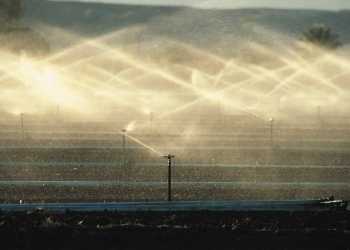7.2.2: Transpiration
- Page ID
- 16046
The principal way in which water enters the air is through evaporation. Plants are another important source of atmospheric moisture. Plants contribute water to the atmosphere by transpiration. Transpiration is the transfer of water into the air via leaf pores or stomata. Interestingly, the same three requirements for evaporation apply to transpiration. Approximately 600 cal/gm of energy is required to transpire water from leaves. The transfer of water into the air removes heat from the plant and so transpiration, like evaporation, is a cooling process. Thus transpiration is an important means of transporting heat between the surface and air above.
Water for transpiration comes from that which is stored in the soil and then extracted by plant roots. The amount of water that is held in the soil moisture zone is dependent on the texture and structure of the soil. Coarse textured soil dominated by sand-size particles holds less moisture than a finer textured soil.

How important is plant transpiration? Consider this, one mature oak tree can transpire as much as 100 gallons of water in a day. An acre of corn can transpire as much as 4000 gallons of water per day (EPA). The problem that many countries face is an ever dwindling resource of groundwater to promote agriculture in regions too dry to do so. Far too often, groundwater resources are extracted faster than they can naturally replenish themselves. Over pumping depletes groundwater reserves in aquifers and ultimately leads to their collapse. This is happening in the semiarid and arid regions of the United States. One aquifer in particular, the Ogallala Aquifer, is at risk of being depleted. The recharge area where water enters the aquifer is in the Rocky Mountains. The aquifer extends underground for hundreds of miles into the Great Plains. The aquifer is used to support agriculture and municipal water supplies on the Great Plains. Unfortunately, water is being pumped out of the aquifer much faster than the rate of replenishment. The fear is that over pumping will lead to the aquifer running dry causing severe stress on the Great Plains agricultural economy.


